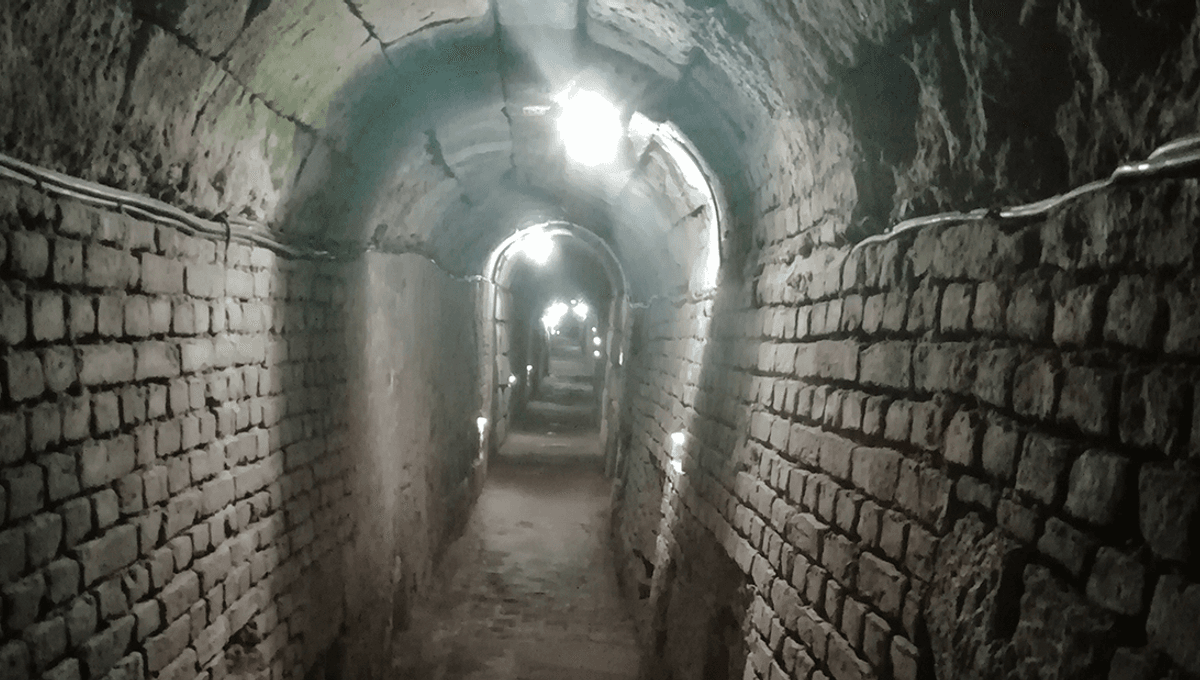
During excavations of a bathhouse in Ashkelon, Israel, archaeologists came across a grim discovery. Beneath the bathhouse – built in the 4th century CE and used until the 6th century CE – in the sewer, they found the bones of nearly 100 male infants, mixed in with animal bones.
A study of the bones, carefully reconstructing the sets, found all parts of the skeletons to be there, though the sheer number of bones meant that they could not separate out the individuals. The good condition of the bones suggested that the infants had been disposed of soon after death “when the soft tissues were still present”.
Burial within sewers was unusual for the time and area, with careful jar burial of infants being found in a nearby courtyard around 182 meters (600 feet) away.
“The presence of the infants in the sewer thus aroused suspicion that they might be victims of infanticide,” the team wrote in their paper, “or some mass disaster that had caused a breakdown in normal burial practices.”
They reasoned that if the children were all newborn that they were likely victims of infanticide, given that the large volume of body parts suggested they were not stillbirths.
“If they were of different ages, then we could assume that they either died from natural causes, or were massacred.”
Examining the remains closer, they found iron oxide stains on many of their teeth which was not present on the bones, and analyzed it using mass spectrography.
“The iron oxide was concentrated in the external layer of developing immature enamel and may represent degradation products of haemoglobin released by bleeding into the oral tissues at the time of death,” the team wrote. “Breakdown products of haemoglobin have been previously identified in the dentine of adult teeth, especially after asphyxiation. It is ascribed to blood being forced into the dentine tubuli.”
Analysis of the bones put them all at roughly the same age.
“Infanticide would appear to be the most likely explanation for the disposal of only newborn infants in the gutter,” the team wrote in their discussion, adding that infanticide was “widely practised in Hellenistic and Early Roman societies”, and was used in Greek and Roman societies as a grisly way to limit family size.
“Disposal of the infants in the gutter at Ashkelon, is then anomalous, and presumably reflects either indifference or an emergency measure resulting from some catastrophe, such as an epidemic or massacre,” the team concluded.
However, it was usually females who were “discarded”. Another paper, which analyzed the DNA to confirm the sex of the bones and found some female infants among the many male, proposed a grim explanation: According to the team, the bathhouse could have been a brothel, and the infants unwanted offspring.
“The bathhouse was situated in what was probably a well established part of the ‘‘red-light’’ district of Roman Ashkelon. The linkage of baths with prostitution has been alluded to by classical authors and reinforced by the architectural and epigraphic remains from Ashkelon,” the team wrote. “The presence of both male and female victims in the gutter beneath the bathhouse raises the intriguing possibility that these infants may have been the unwanted offspring of courtesans serving in the bathhouse.”
The team write that males did work in bathhouses, but females were more in demand.
“In the Roman empire one of the primary sources of prostitution was abandoned children who had been rescued and reared to work as prostitutes at an early age,” they write. “We can imagine that the courtesans of Ashkelon selectively kept and reared some of their illegitimate offspring (mostly females) in the profession and discarded others.”
This explanation has been questioned, with historian John M. Riddle of North Carolina State University noting that contraceptive methods were used at the time.
“The literary evidence – classical, medieval, and early modern – is virtually united in claiming that prostitutes knew what to do to prevent full-term pregnancies,” he said at the time. “Why would prostitutes at Ashkelon be different?”
In short, there is a sewer full of male bones underneath a Roman-era bathhouse, and nobody really knows what caused their deaths.
Source Link: Bones Of Around 100 Male Infants Found In Roman-Era Sewer Have A Grim Explanation